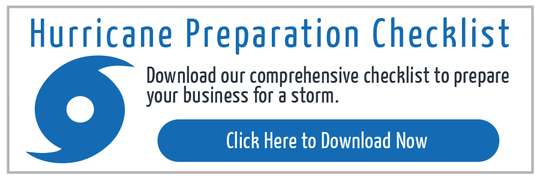 Disaster recovery is a pretty important aspect of your technology. While it’s rare that flooding, hurricanes, power surges, fires or tornados strike; other types of disasters like viruses, ransomware, hardware failing and human error are even more likely to be the source of a data loss or failure. The fact of the matter is that while a natural disaster is an unlikely scenario, the odds are very good that at some point something is going to happen to your systems and data. No matter what that something is – you need a plan in place. Here are four must-haves in your IT disaster recovery plan:
Disaster recovery is a pretty important aspect of your technology. While it’s rare that flooding, hurricanes, power surges, fires or tornados strike; other types of disasters like viruses, ransomware, hardware failing and human error are even more likely to be the source of a data loss or failure. The fact of the matter is that while a natural disaster is an unlikely scenario, the odds are very good that at some point something is going to happen to your systems and data. No matter what that something is – you need a plan in place. Here are four must-haves in your IT disaster recovery plan:
- Disaster Team & Responsibilities
Your disaster plan will need to clearly outline who is responsible for what within your organization. Who is responsible for relocating equipment to a secure area? Who will be responsible for ensuring backups are performed and relocated offsite? You need to clearly delineate responsibilities and establish a team for before, during and after the disaster so that you can be as organized as possible and get up and running quickly and efficiently after a disaster. - Inventory
While this is more related to natural disasters, having photographs and and detailed inventory is extremely important for insurance purposes if disaster strikes. While this is mainly for claims associated with insurance, this will also help you to know what assets you have so that you can manage growth properly and assign workstations and assets as necessary. - Backup or Business Continuity Solution
Whether you’re utilizing an older backup and recovery solution or if you’ve opted for cloud-based business continuity, you should make sure that it meets all your business needs and you have a clear picture of what recovery or continuity looks like. You should know timeline and reliability and should have a good idea of how much data (if any) will be lost and what the impact will be to your business. Your IT professional that helped you configure your plan should be able to quantify these things for you. - Communication Plan:
Your team needs to be kept apprised of the plans that are in place. You should have a clearly outlined communication strategy that communicates the details of your plan. This can be a series of e-mails or in-person meetings. Whatever method you choose, you should make sure that once a disaster is imminent, your employees know exactly what is expected of them. This can include:
- Expectations during disaster
- Timeline for disaster recovery
- What they’re expected to tell clients and customers
These are just the highlights of a comprehensive disaster plan. Make sure that you’ve taken the time minimally to address these key points and strategize the responsibilities, inventory, communication and backup and continuity plan for your organization. Huge data losses and downtime can prove catastrophic for even the small business. Include these 4 must-haves in your disaster recovery plan and you’ll be well on your way to keeping your business safe even in a disaster scenario.
![]()










